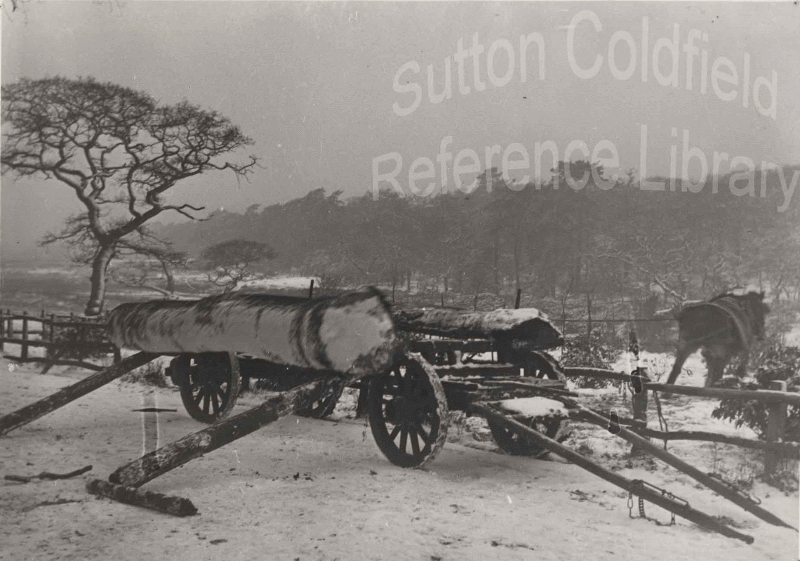At one time every building was made of timber and heated by wood-burning fires, farmers used wooden fences , blacksmiths used charcoal; wheels, wagons and tools were mostly wooden - in short, a good supply of all kinds of woodland products was essential. Luckily, Sutton had extensive woods.
Three thousand acres of woodland is recorded for Sutton in 1086, and in 1125, when the Manor of Sutton was taken over by the Earl of Warwick, it included an extensive area of managed woods. The art of managing woodland so that it produced a regular supply of the right kind of timber and other products had developed over thousands of years, and was well understood in Sutton. You had to surround the wood with a ditch and a bank with a fence on top so that animals could not get in and eat the seedlings and new coppice growth. Trees were felled so that new shoots would grow up from the base of the trunk, and after a given number of years, when the resulting poles had grown to the desired size, they too were harvested. Suttonians could help themselves to wood for firing and fencing, but the Lord of the Manor, and later the Corporation, controlled the timber trees.
In 1125 the managed woodland was mostly in New Hall Valley, the area to the east being known as “Beyond the Woods”. Later, there were coppices at Hillwood, Lindridge, Signal Hayes and Eachelhurst, but by 1550 all these had ceased to be managed woodland. Instead, the woods in Sutton Park were fenced and ditched by Bishop Vesey, and the Warden and Society took control of them. The Warden and Society was the town’s corporation, the name is remembered in the belt of trees along the Thornhill Road boundary of the Park known as Wardens Belt.
Their management of the woods is sometimes recorded in the minutes of the Warden and Society meetings, for example the clear felling of Westwood Coppice and replanting it with chestnut in the late eighteenth century. The woods gave the Warden and Society a ready source of capital - for example they needed money in 1728 to build a workhouse and a school costing £1200, and the minutes for the meeting held on March 2nd that year record that “3664 oak trees in the park were sold to Mr. Haden of Birmingham for £1200.” Woodland management required that trees were felled as they reached maturity, and 100 years later, 1824, the proceeds from sales of timber had accumulated to over £30,000 in the coffers of the Warden and Society.
